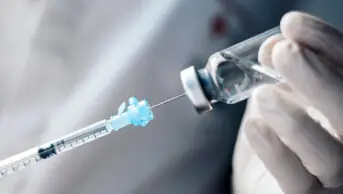For some years now, certain manufacturers have been removing the brand name of a medicine and relaunching the product as a generic — so called “debranding”. The aim of this exercise is to circumvent the Pharmaceutical Price Regulation Scheme (PPRS) and allow the manufacturer to increase the price to the NHS.
As well as the additional cost to the NHS that this practice causes, it also has potential to affect patient safety. One such example is primidone tablets. The originator brand, Mysoline (Serb), was discontinued in 2013. There is more than one listing on the Dictionary of Medicines and Devices (dm+d) for generic primidone 250mg tablets, all of which will have been licensed by the Medicines and Healthcare products Regulatory Agency (MHRA).
Recently, I was reviewing the MHRA guidance ‘Antiepileptic drugs: new advice on switching between manufacturers’ products for a particular drug’ (2013) in my own practice. There are different categories based on therapeutic index, solubility and absorption. Category 1 lists the products where the particular brand should be maintained. This includes primidone, among others. However, there is no branded product of primidone, since the “debranding” in 2013.
I contacted the MHRA for clarification and advice on how to best overcome the problem of maintaining the brand of primidone. My query was initially misunderstood, but I finally received a substantial response on 26 June 2015: “Parallel imported products do not have to use the UK brand name (though many do) and no products carry a PLPI [parallel import] number, they are all PL nnnnn/nnnn. Naming of parallel imported anti-epileptic medicines is a problem. From a regulatory perspective the preferred option is for the parallel imported product to be marketed under the same name as the UK equivalent product. The patient then sees the same name and concerns about equivalence are reduced. For branded products this is usually not an issue except in rare cases where trademark issues can prevent the importer from using the brand name. For generic products, which use ‘rINN [recommended International Nonproprietary Names] + MAH [marketing authorisation holder] name’ it presents many more issues as the MAH name is usually a trademark and the proprietor of the trademark objects to its use by the importer. The PI product may also be marketed as the imported brand name (where this will not cause confusion in the UK market) or as ‘rINN + PI name’. The MHRA is not competent to advise on dispensing practice.”
This is disappointing. The MHRA has not prevented this situation by allowing the ‘debranding’ and, subsequently, licensing more than one generic primidone product (which may or may not be bio-equivalent to the originator product) and for which its own guidance advises for patients to remain on the same brand. Also, the MHRA is not competent to advise on dispensing practice, which, quite frankly, is exasperating. If the UK licensing authority for medicines is not competent in advising on dispensing practice, it is extremely worrying from a patient safety perspective.
Mark Burdon
Chester Le Street
County Durham
David Guest, Group manager in the MHRA licensing division, responds:
In 2013, following advice from the Commission on Human Medicines (CHM), the MHRA issued guidance ‘Antiepileptic drugs: new advice on switching between manufacturers’ products for a particular drug’. This classified anti-epileptic drugs (AEDs) into one of three categories to help prescribers and patients to evaluate the potential risk of loss of seizure control or side effects caused by switching between different manufacturer’s products of a particular AED, and to decide whether there is a need to maintain continuity of supply of a specific product. To support this advice, the MHRA coordinated a change in the product name for all generic AEDs so that the name of the marketing authorisation holder was included in the product name (e.g. Primidone SERB 250mg tablets). This naming convention facilitates continuity of supply for generic products in the same way as products identified by their brand name.
Marketing authorisation holders can, with certain restrictions, decide on the name under which the product is marketed. This includes a decision to sell a product under its generic name and the MHRA has no grounds on which to object to this unless there is a safety concern. However, inclusion of the marketing authorisation holder name in the product name allows identification of a specific product where this is required.
Prescribers and dispensers can support maintenance on a particular manufacturer’s product by referring to the brand name for the product or by using the generic name together with the marketing authorisation holder’s name for generic products.
The MHRA is the competent authority for the regulation of medicinal products but it does not regulate dispensing practice — this falls within the remit of the General Pharmaceutical Council.


